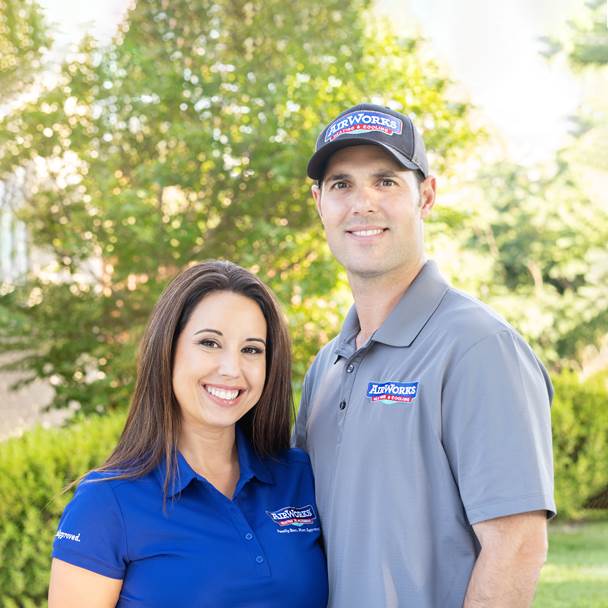
News
Carbon Monoxide: What do you know? – One Reason Heat Exchangers Rust
By David Richardson

Have you ever wondered why some heat exchangers rust while others remain spotless year after year? One overlooked reason could be flue gas. Let’s look at what heat exchanger rusting can reveal and why it’s happening.
Visual Signs of a Bigger Problem
Our industry has blamed heat exchanger rusting on everything from contaminated combustion air to high humidity levels. While these issues must be addressed, they aren’t the only cause of rust in natural draft equipment. It may also be a clue the appliance is unsafe.
Rust is a visual indicator. It reveals flue gas is not leaving the heat exchanger and exiting through the flue properly. You might not think this is a big deal, but it can be serious. When rust happens, the combustion process is deteriorating whenever the equipment is in operation. Also, the appliance can produce thousands of parts per million (ppm) of carbon monoxide (CO) in this condition. So, how does this happen?
CO2 Displacement and H2O
Perfect combustion has two main byproducts. They are Carbon Dioxide (CO2) and Water Vapor (H2O). Safe operation assumes these gases leave the equipment and are replaced with Oxygen (O2) for the burner flame.
However, when CO2 and H2O don’t leave the equipment as intended, the combustion process breaks down inside the equipment. CO2 is heavier than air and begins to “back up” in the heat exchanger. If flue gas doesn’t leave the equipment, combustion air can’t get in. This starves the burner flame for Oxygen and leads to unsafe operation.
The water vapor part of flue gas (H2O) is the source of heat exchanger rusting. You have probably dealt with some of its corrosive results in other destructive forms, too. It can cause collector box rotting, hot surface igniter failure, pressure switch failure, and burner rusting. How can water vapor can cause so much damage?
Flue Gas Acidity
When you examine flue gas pH levels, you will find the answer. If you remember from grade school science classes, pH is the scale used to determine whether a liquid is a base, neutral, or acid. The scale ranges from zero to 14.
The neutral level for pH is seven. Numbers higher than seven are a base, numbers lower than seven are acid. The lower the pH number, the more acidic. The pH level of pure rain is slightly acidic at 5.6 while pure water is neutral at seven.
The problem with flue gas is its pH doesn’t match either of these values. As the components of flue gas interact, they create a form of carbonic acid (H2CO3). Many municipalities require the condensate for condensing equipment drain into a condensate neutralizer for this reason.
The moisture in flue gas has a pH between 3.5 to 3.8 and destroys most metal surfaces it accumulates on. When flue gas doesn’t leave the equipment, it eats away metal surfaces and eventually destroys them. So how can you determine if this will happen on a piece of equipment you are testing?
Uncovering the Cause
When you measure multiple carbon monoxide readings of the flue gas, you can predict if rusting will occur. Unfortunately, the testing methods that so many use may cause you to miss this issue. Typically, technicians may take only one CO reading in the flue during the run cycle.
When you measure multiple readings during the run cycle, you can find problems based on the patterns you see. For example, if CO readings continue to climb, even a bit, you are watching combustion deteriorate and the equipment will eventually rust.
From a safety standpoint, it is even more important to catch CO issues. Rising CO readings don’t peak. When they continue to rise after five to ten minutes of run time, they won’t self-correct. The CO readings only get worse.
Unfortunately, most natural draft equipment allows Mother Nature to control its source of combustion air, and it is rarely consistent. If this continues, you will see equipment combustion that deteriorates at some point of operation.
The visual signs of rusting provide clues flue gas is not leaving the equipment, but testing is the only one way to determine the cause. Ask yourself this: “How many rusted-up pieces of equipment have I seen?” With that in mind, you know this is a big problem that is being overlooked.
David Richardson serves the HVAC industry as a curriculum developer and trainer at the National Comfort Institute, Inc. (NCI). NCI specializes in training focused on improving, measuring, and verifying HVAC and Building Performance.
If you’re an HVAC contractor or technician interested in learning more about adding carbon monoxide testing to your services, contact David at davidr@ncihvac.com or call him at 800-633-7058. NCI’s website www.nationalcomfortinstitute.com is full of free technical articles and downloads to help you improve your professionalism and strengthen your company.














